
The history of the South African Braai goes back to when the Dutch settlers first came to South Africa. They brought their traditional cooking style, including a barbecue on one side of the grill and food on a spit over another set. These settlers spent most Saturdays preparing for work by cooking all day at these aprons. The word “braai” predates its use as a verb and means “to roast”. The term combines the Dutch words “brand” for fire and “wrak” for meat.
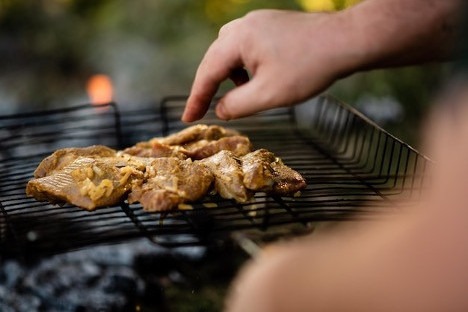
Where It All Begun
The first evidence of barbecuing in South Africa came in 1652 when some ships on their way to the Cape Colony stopped at a settlement called “Swartland” for fresh water and supplies. The Dutchman’s cook on board set up a spit found some wood and got cooking. When the ships left, they left a good impression on the Swartland people, so whenever they had visitors, they would use this cooking method. The settlers of the Cape Colony used this method to barbeque as well.
The Dutch cooking method involved a spit in cooking meat and a barbeque called the apron at the front of the house. The fire would be lit and slowly roast meat on one side while a pot is hung over the other to cook. Once there were enough coals and embers, they could continue cooking. It is how using your braai started in South Africa.
So, what is a South African Braai?
The South African braai is an outdoor cooking style that has evolved over the centuries. It blends many traditions worldwide into one uniquely South African experience. From Dutch settlers to English and German immigrants to the native Africans and everyone who has joined us on this adventure called South Africa. The South African Braai means “To roast.” Fitting for a country that’s known for its BBQs! But what truly makes it a South African BBQ?
The South African Braai Barbecue: The Basics
The most crucial element of a braai is fire. Your braai is about to start when all the materials, including an oven, grill, or barbecue, are on the braai table. First, the fire must be lit and very hot. Once lit, you will wait for it to settle down a bit before starting your meal. Then, it would help if you had enough red-hot coals to start cooking with and white smoke to indicate they’re ready for cooking.
Meat
The meat is the main meal to be served at a braai. There are all sorts of other side dishes to accompany them. Traditionally the heart was wrapped in tin foil and roasted over a spit over the fire. In recent years, braai implement manufacturing companies have started producing smoker woodchip burners explicitly designed for barbecuing to give the meat an authentic smokey flavour. Grilling food is wrapped in foil and basted with homemade marinade to start the cooking process before being placed on the braai grid. Wrapping meat in foil has become popular in the last decade or so.
Side Dishes
Traditionally side dishes were served on a plate with two or three of your favourite simple side dishes, like pap, chakalaka, and salads. Nowadays, however, the side dishes are often eaten on the braai table and are freshly picked from a salad bar. Side dishes include salad bars (like an Indian Curry Salad Bar or an Italian Salad Bar) and mussies, which usually contain meat, fish, or fruit like applesauce and poached eggs. South Africans also love their cruise, which is a Malay dish that has the national plate of rice in it.
Drinks
Drinks are a big part of braais, so the braai master had better know their way around a bar! South Africans enjoy drinks with their braaied meat and side dishes, and most people take their drinks seriously. Usually, there is one “entourage” drink, and then it’s time to mix it up with other beverages like Vodka, Cranberry, Sangria, Margarita, and Mojito are common.
Travelling To South Africa- Then A Braai Must Be On Your Bucket List!
Nothing brings South Africans and international visitors together like a braai, with the sizzling sound of meat atop the grill. We highly recommend you experience a traditional braai and provide the details of this easily accessed excursion which will leave you with lips licking In this excursion based in Cape Town, a tour guide will take you to Gugulethu to experience a traditional shisa nyama (braai) at Mzoli’s Place. Mzoli’s place is always alive with chatter and music. You will visit Groot Constantia where you will explore the oldest wine farm in the Constantia Valley. You will get a taste of the unique, local wines and learn important aspects of South African traditions and culture. Hotel pick-up and drop-off are included.
Why A South African Braai Is Important
The South African braai is a tradition in this country, and we need to maintain the heritage of our culture by retaining such cultural practices and traditions. It might seem like a simple BBQ, but the braai brings people together from all walks of life. People who wouldn’t usually hang out can enjoy themselves and have fun over a braai.
The Heritage Day Braai is symbolic of South African national pride. Why? Because, the South African Braai is a traditional act of getting together for a meal and forging new friendships, just like the people who came to this beautiful country before we did. The South African Braai is an essential facet of their culture that should be celebrated and cherished. The South African Braai fits right in with this and is something we should pass on to generation after generation.
So How Do You Get Started?
The first thing to do is get your braai materials, including the fire and any additional instruments you will use, like tongs and a grill. If you lack any of these, you can get them at a department store, but they will be expensive. A good alternative is to get an old barbecue, an old charcoal grill, or a heavy-duty electric griddle and use it for cooking. The fire must be on for about 30 minutes before you start. Once you’ve got your fire going, it’s time to start cooking.
The South African Braai is a tradition, a cultural icon, and an essential part of the country’s history. It is an experience, and an excellent opportunity to experience those who live in this country. The food on your braai table should be something you enjoy. Whatever you choose, remember that the food served at a braai is usually something you prepare at home and bring along rather than buying readymade.
South African Braai FLAVOURS taste the adventure
BRAAI FLAVOURS tastes the adventure, this cookbook from the popular Zimbabwean, South African, and Vegetarian African Kitchen brand based in Nottingham, United Kingdom is Available on Amazon. The Braai Flavours menu is from Zimbabwe where one of the seventh wonders proudly calls home, Victoria Falls, a key landmark and the biggest waterfall in the world.
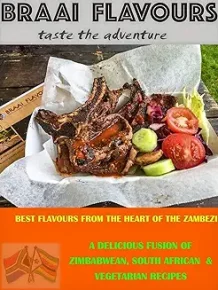
.
“As an Amazon Associate, I earn from qualifying purchases.”
Looking for the Taste Of South African Braai Or Biltong
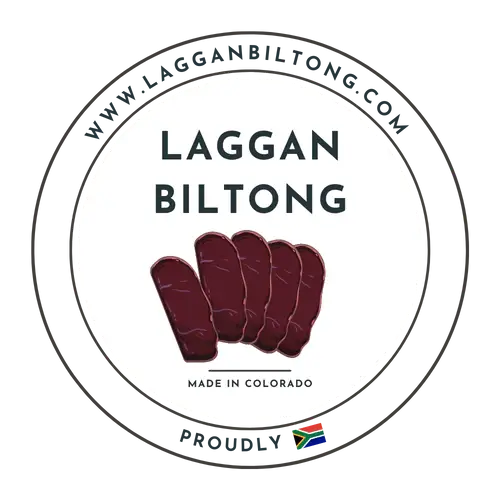
Vic and Janette Leonard whose origins are rooted in the beautiful central African country of Zimbabwe, make all their biltong in small batches using only the finest ingredients and a spice mix inspired by a family traditional South African recipe
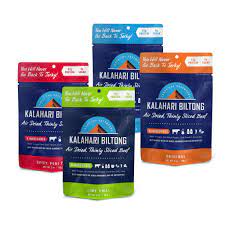
Garlic Kalahari Biltong, Air-Dried Thinly Sliced Beef available at the Kalahari Snacks Store

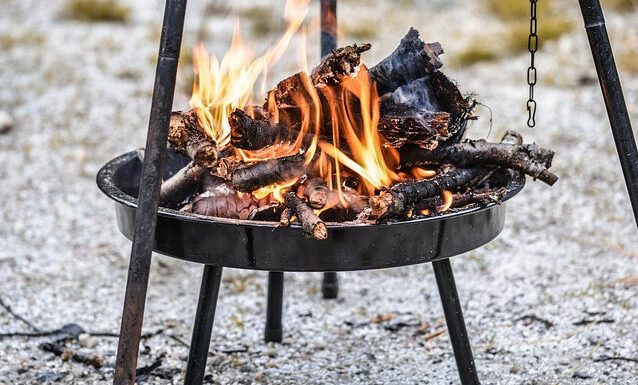
Delicious, South African braai. I would recommend wood fire and charcoal to get a great smoked taste. A gas grill don´t give that same taste. I love this cooking style of the South African surroundings, and how to bring that rich culture ti life. I will take a look at at some of your other posts. Nothing can beat the food. Thank you
Absolutely, I just love an authentic Braai.
Hello Gary. your exploration of the South African Braai beautifully captures the essence of a cherished tradition. The historical background, cultural significance, and detailed insights into the art of braai make this piece an engaging read. Your emphasis on the connection between a braai and building friendships is heartening. The recommended excursion and celebration of Heritage Day Braai add a delightful touch. well done!
Thanks, Ela, I have fortunately had the opportunity to travel a bit over the years and just love South Africa. Cape Townhas been one of my favourite destinations. Happy Grilling,
Wow! A bit of a history lesson that I didn’t get in school…the Dutch bringing a new cooking technique to South Africa! Very nice description of the braai. I love cooking outdoors and on my grill in the warm months. I believe I’ve even seen some gas grills that incorporate something similar where you can roast on a spit AND grill on the other side. And it’s all in one unit. I’ll be needing a new grill this year and may look more into that type of outdoor grill.
Hi Lisa, I’m happy you enjoyed some background on the Braai. I just love learning new and culturally diverse cooking methods. When you start looking for your new “summertime” grill, don’t hesitate to look into our regular posts on BBQ Equipment Deals and Our BBQ Shop and Gift writeups. These may help you with your research. Happy Grilling!
What a fascinating dive into the history of South African Braai! I never knew it had such deep roots, tracing back to Dutch settlers in the 17th century. It’s incredible how it has evolved into a cultural icon, blending traditions from various backgrounds into one uniquely South African experience. Reading about the essential elements of a braai, like the fire and the variety of meats and side dishes, has me curious about the different regional variations across South Africa. Are there specific regional specialties or traditions that stand out in the world of South African braai?
Hi Stratos, Thank you for sharing your enthusiasm for the rich history of South African Braai! It truly is a fascinating journey that intertwines various cultural influences into one cherished tradition.
Indeed, the evolution of braai from its Dutch origins to its status as a cultural icon reflects the diverse tapestry of South Africa. Your curiosity about regional variations is spot on! Across the country, you’ll find a delightful array of specialities and traditions that make each braai experience unique. Braai does interchange with barbeque, but it is so much more. Culturally, South Africa is diverse and within each culture, you can see examples that are the same BUT different. It always involves the use of an open fire, grill for cooking purposes, but outcomes vary based on cooking method and type.
For instance, in the Western Cape, you might encounter the beloved “sosaties,” skewered meats marinated in a spicy sauce influenced by the Cape Malay community. Moving towards the Eastern Cape, you’ll discover the tradition of “smiley,” a grilled sheep’s head, cherished by Xhosa communities.
In KwaZulu-Natal, the Indian influence introduces flavours like “bunny chow,” hollowed-out bread filled with curry, which has found its way onto many braai menus. Meanwhile, in the heart of South Africa, the Free State boasts a love for “pap en vleis,” a hearty dish featuring maize meal porridge served with succulent grilled meats.
These are just a few examples of the diverse regional specialities that contribute to the vibrant tapestry of South African braai culture. Each dish tells a story of heritage and tradition, adding flavour and meaning to the experience of gathering around the fire with friends and family.
We hope this insight adds to your appreciation of the intricate world of South African braai. Feel free to explore further, and perhaps even embark on your own culinary journey to discover the endless delights of our beloved tradition. Don’t hesitate to jump into this publication Braai Flavours- taste the Adventure, you will find some value within this book.
Happy grilling!